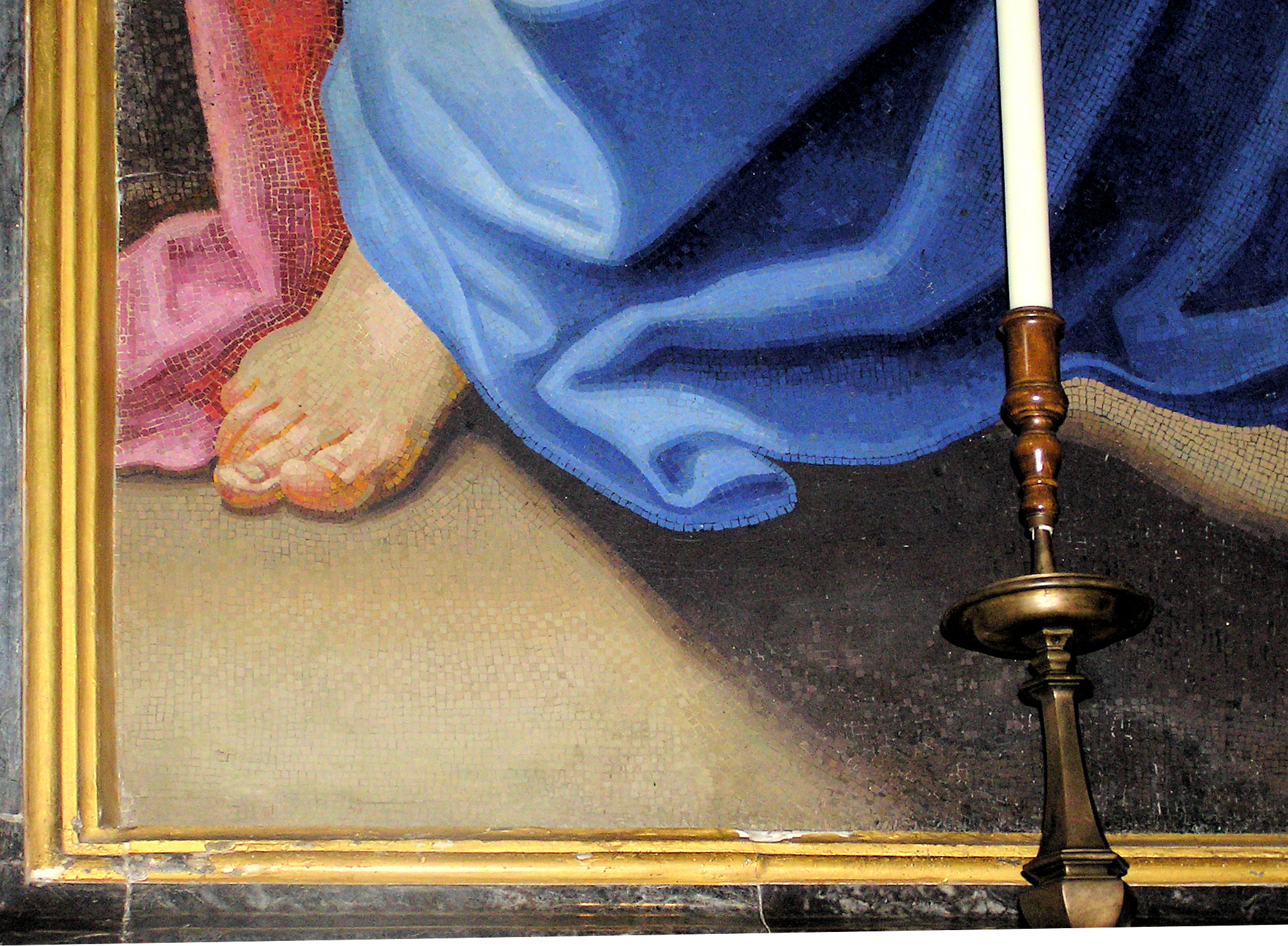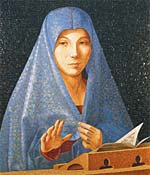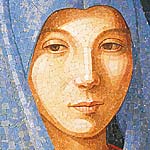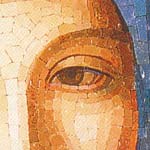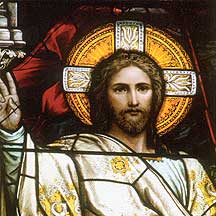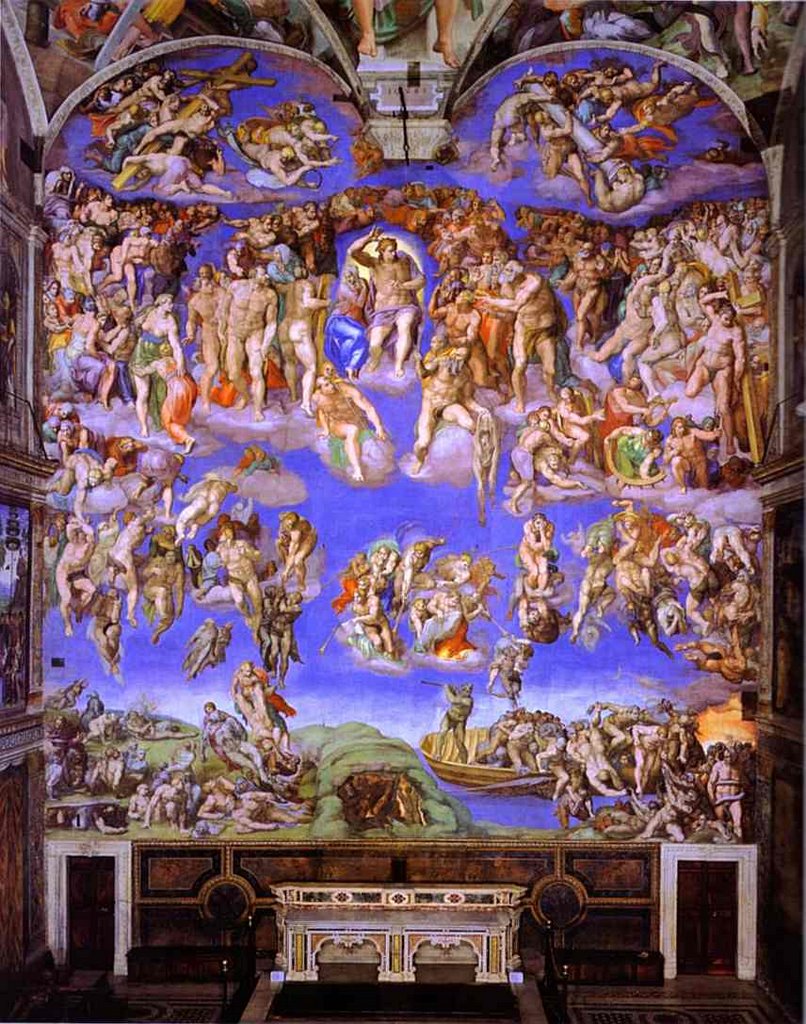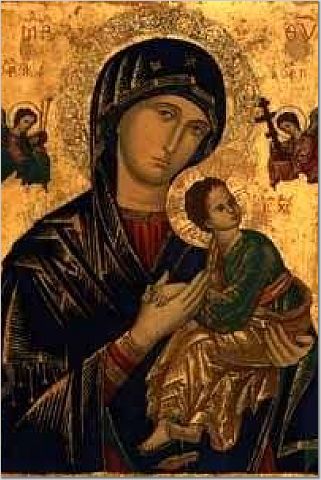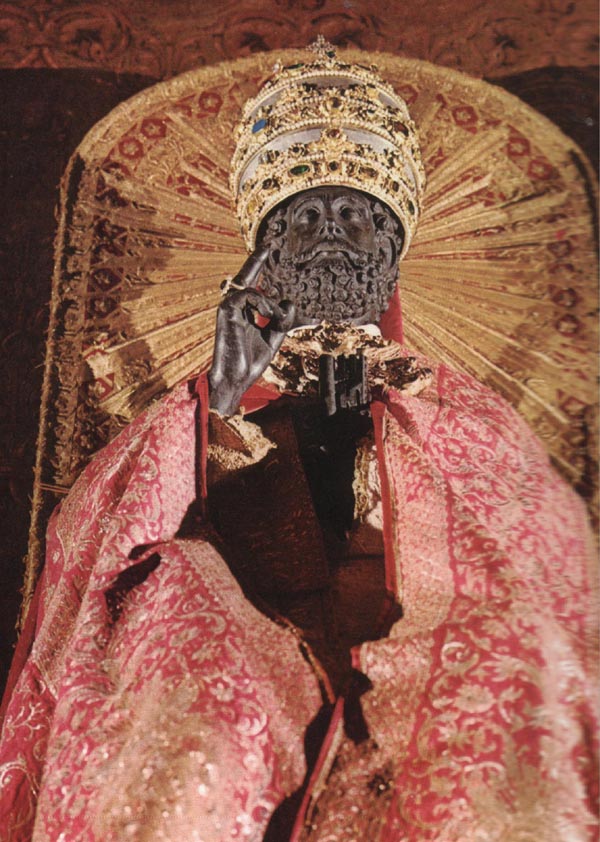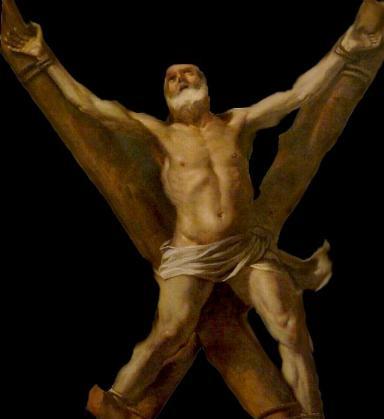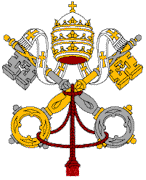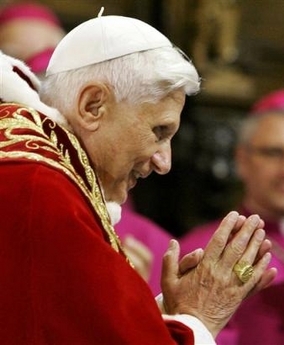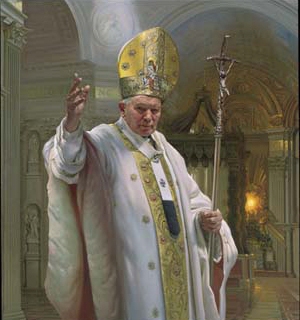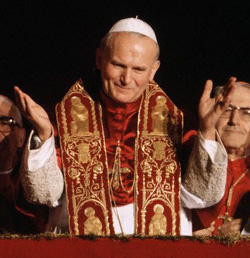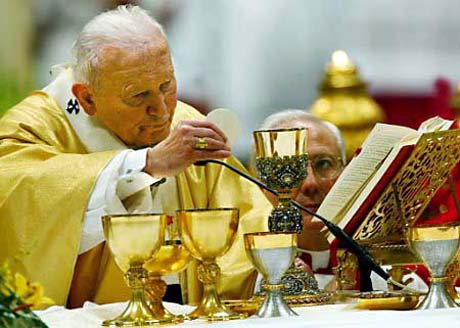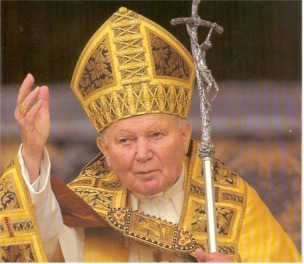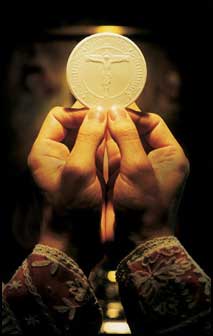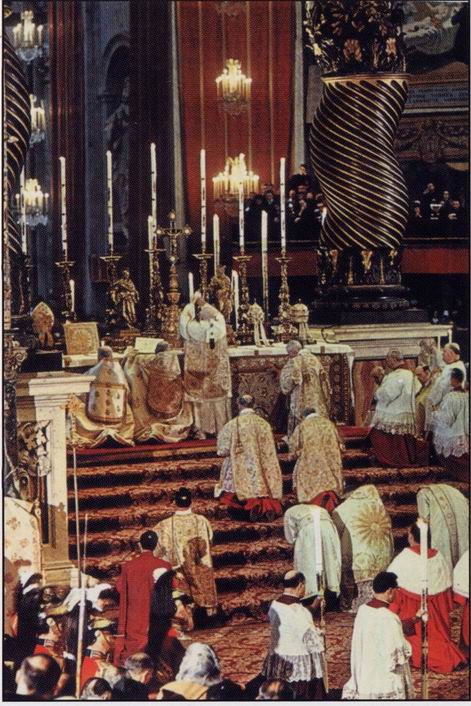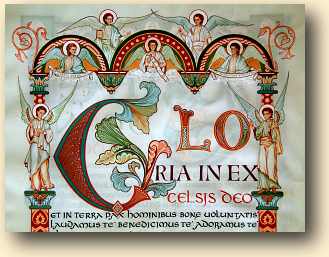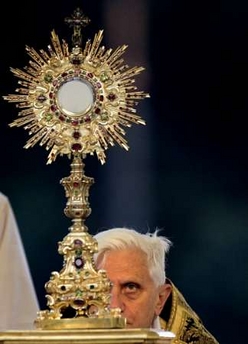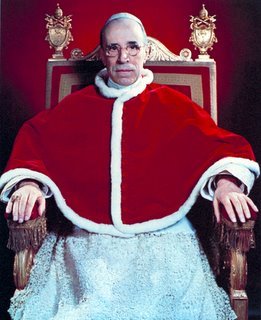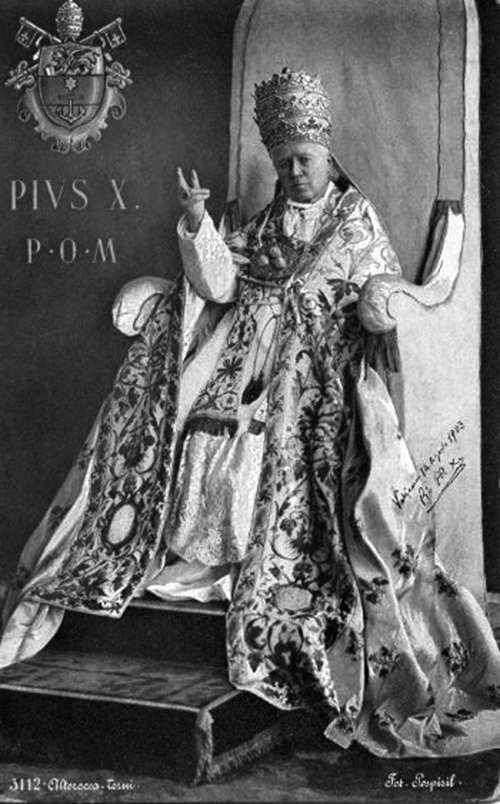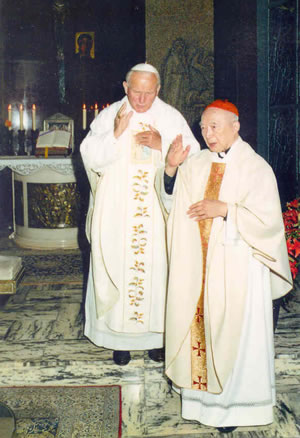I know this is waaaaaayyy late, but better late than never right?

The stained glass windows of the former Cathedral of the Assumption
The Solemnity of the Assumption of the Blessed Virgin Mary into Heaven is one of the most ancient, hopeful and glorious of the Church's feasts and celebrates the fact that, at the completion of her earthly life, Mary was assumed by God, body and soul, to be united with her Son Jesus Christ in the glory of Heaven.

Mary is the type of the Church, at the same time Virgin Spouse and Mother and the path that Mary walked is the same path that the Church is treading towards the parousia. Thus, the Assumption of Mary and her glorification is Heaven offers hope that as the one 'who believed that the Word of God spoken to her would be fulfilled' is raised as the first fruit of the redemption procured by Christ Jesus, we too who follow in her path might also one day be raised to God and enjoy with Mary the Beatific Vision in the company of the angels and the saints.
The Assumption of Mary should not surprise us because like Enoch who had walked with God and Elijah before her, assumptions are not something totally unscriptural of alien, something unheard of. Although only formally defined by Pope Pius XII in 1950, in the Bull
Munificentissimus Deus, commemorated as the Dormition of the Theotokos or the Falling Asleep of the Mother of God in the East and the Assumption in the West, this feast is among the earliest in the Church and co-temporal with the definitions of the Canon of Scripture. It was mentioned by the various Fathers of the Church as early as the 4th century and is universal to the ancient Churches of both East and West. The Oriental Orthodox or non-Chalcedonian Orthodox (such as the
Armenians and the
Copts) which split from the Catholic Church after the Council of Chalcedon in 451 and the Eastern Orthodox Churches which formally split from the Catholic Church in 1054, all hold this Feast in common which testifies to it's antiquity and the universality of the belief in Mary's Assumption.
The earliest Catholic Church in Penang, established in 1786, the year of Penang's foundation is dedicated to the Assumption, long before it's 'official' solemn definition, is another testimony to the antiquity and universality of this belief.
Image of the Virgin Mary, mother of Jesus, in the Catacomb of Priscilla in Rome. It depicts her nursing the Infant Jesus. This is earliest known image of Mary and the Infant Jesus and testifies to the antiquity of Marian devotion. St. John of Damascus (P. G., I, 96) thus formulates the tradition of the Church of Jerusalem:
 St. Juvenal, Bishop of Jerusalem, at the Council of Chalcedon (451), made known to the Emperor Marcian and Pulcheria, who wished to possess the body of the Mother of God, that Mary died in the presence of all the Apostles,[except St. Thomas, who was evangelizing in India] but that her tomb, when opened, upon the request of St. Thomas[after he returned, having had a vision of the Virgin's death], was found empty; wherefrom the Apostles concluded that the body was taken up to heaven.
St. Juvenal, Bishop of Jerusalem, at the Council of Chalcedon (451), made known to the Emperor Marcian and Pulcheria, who wished to possess the body of the Mother of God, that Mary died in the presence of all the Apostles,[except St. Thomas, who was evangelizing in India] but that her tomb, when opened, upon the request of St. Thomas[after he returned, having had a vision of the Virgin's death], was found empty; wherefrom the Apostles concluded that the body was taken up to heaven.

As one of the earliest Christian writings, the martyrdom of St. Polycarp of Smyrna, a disciple of the Apostle John testifies, the relics of the martyrs were considered by the early Christians as 'valuable than precious stones and finer than refined gold'. Christians venerated the relics of the holy men and women who lived and died for Christ since antiquity and the relics and bodily remains of the Apostles, such as Peter and Paul in Rome were known and honoured by magnificent basilicas and Churches after the Edict of Milan. Before that, the shrines of these holy people were commemorated and their locations kept alive in the pious memory of the early Christians who flocked to their tombs on their heavenly birthdays, the date of their martyrdom.
But of the body of the one who gave her flesh and blood to the Word, who bore Him and brought Him up, the Blessed Virgin, there was no trace. No cities vied for the reputation and honour of having been her final resting place. Relics such as her veil and cincture are indeed claimed, but never her body.
Sacred Scripture has this to say:
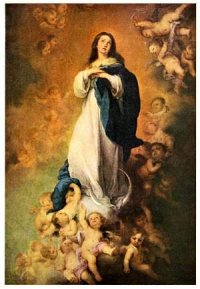 And the temple of God which is in heaven was opened; and the ark of His covenant appeared in His temple, and there were flashes of lightning and sounds and peals of thunder and an earthquake and agreat hailstorm.
And the temple of God which is in heaven was opened; and the ark of His covenant appeared in His temple, and there were flashes of lightning and sounds and peals of thunder and an earthquake and agreat hailstorm.
A great sign appeared in heaven: a woman clothed with the sun, and the moon under her feet, and on her head a crown of twelve stars;and she was with child; and she cried out, being in labor and in pain to give birth. And she gave birth to a son, a male child, who is to rule all the nations with a rod of iron; and her child was caught up to God and to His throne.
So the dragon was enraged with the woman, and went off to make war with the rest of her children, who keep the commandments of God and hold to the testimony of Jesus.
-Rev 11:19, 12:1-2, 5,17
Jesus, the Christ is the male child who is to rule over the nations, Satan, the ancient serpent, the devil, is the dragon (Rev 12:9). Each of the figures represent a person and thus, the Woman, no different, is Mary, the mother of Jesus and the mother of all those who 'keep the testimony of Jesus'. (Some say that the Woman is Israel but then Israel is not the mother of the Church, those who keep the testimony of Jesus.

Others say that the Woman is the Church, but the Church did not give birth to Jesus, who is Her head, Mary did. St. John, to whom Mary was entrusted by Jesus when He hung on the cross provides the clue for the identity of the Woman in his Gospel. Read it and see who is it that Jesus calls Woman.)
Along with the biblical reference in Acts 2:14 that confirms that the Virgin Mary was with the Holy Apostles on the day of Pentecost, the tradition of the Greek Church holds that she remained in the home of the Apostle John in Jerusalem, continuing a ministry in word and deed.
At the time of her death, the disciples of our Lord who were preaching throughout the world returned to Jerusalem to see the Theotokos. Except for the Apostle Thomas, all of them including the Apostle Paul were gathered together at her bedside. At the moment of her death, Jesus Christ himself descended and carried her soul into heaven.
Following her repose, the body of the Theotokos was taken in procession and laid in a tomb near the Garden of Gethsemane. When the Apostle Thomas arrived three days after her repose and desired to see her body, the tomb was found to be empty. The bodily assumption of the Theotokos was confirmed by the message of an angel and by her appearance to the Apostles.
The Icon of the Feast of the Dormition of the Theotokos shows her on her deathbed surrounded by the Apostles. Christ is standing in the center (1.) looking at His mother. He is holding a small child clothed in white representing the soul of the Virgin Mary. With His golden garments, the angels above His head, and the mandorla surrounding Him, Christ is depicted in His divine glory.
|
| 1. Christ, appearing in His Glory, stands in the center of the icon cradling the soul of His Mother, the Theotokos and Ever-Virgin Mary. |
The posture of the Apostles direct attention toward the Theotokos (2.). On the right Saint Peter censes the body of the Theotokos. On the left Saint Paul (3.) bows low in honor of her.
 |
| 2. The Apostles bow their heads in reverence to the Theotokos as Saint Peter (right) censes her body (detail). |
Together with the Apostles are several bishops (4.) and women. The bishops traditionally represented are James, the brother of the Lord, Timothy, Heirotheus, and Dionysius the Areopagite. They are shown wearing episcopal vestments. The women are members of the church in Jerusalem.
 |  |
3. The Apostle Paul bows in honor of the Theotokos (detail).
| 4. Also in attendance to pray for the Theotokos were several Bishops (detail). |
In front of the bed of the Theotokos is a candle (5.) that helps to form a central axis in the icon. Above the candle is the body of the Theotokos and Ever-Virgin Mary. Standing over His mother is Christ holding her most pure soul. Above Christ the gates of heaven stand open, ready to receive the Mother of God.
 |
| 5. The Theotokos lies in the center of the icon surrounded by the Apostles and a candle in front of her bed (detail). |
This great Feast of the Church and the icon celebrates a fundamental teaching of our faith—the Resurrection of the body. In the case of the Theotokos, this has been accomplished by the divine will of God. Thus, this Feast is a feast of hope, hope in Resurrection and life eternal. Like those who gathered around the body of the Virgin Mary, we gather around our departed loved ones and commend their souls into the hands of Christ. As we remember those who have reposed in the faith before us and have passed on into the communion of the Saints, we prepare ourselves to one day be received into the new life of the age to come.
We also affirm through this Feast as we journey toward our heavenly abode that the Mother of God intercedes for us. Through Christ she has become the mother of all of the children of God, embracing us with divine love.
Descriptions of the icon from
GOARCH, the Greek Orthodox Archdiocese of North America.
 The Flag of the Straits Settlements
The Flag of the Straits Settlements The Flag of the Crown Colony of Penang
The Flag of the Crown Colony of Penang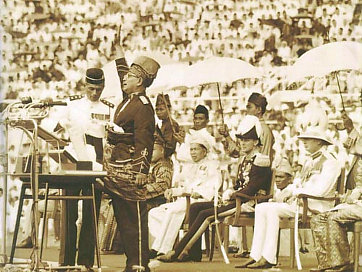 Sabah (British North Borneo) and Sarawak (together with Singapore which was expelled on the 9th of August 1965) were granted independence from the British and merged the Federation of Malaya to form Malaysia on the 16th of September 1963.
Sabah (British North Borneo) and Sarawak (together with Singapore which was expelled on the 9th of August 1965) were granted independence from the British and merged the Federation of Malaya to form Malaysia on the 16th of September 1963. But the vision of its founding Fathers have been thwarted and warped and we’re much more racist and bigoted compared to our fathers. The Islamization of the curriculum has seen non-Malay parents sending their children to national type schools where Mandarin and Tamil, rather than the national language, is the medium of instruction. Non-Malays, who can’t get into public universities due to preferential treatment given to Malays and easier entrance requirements for them study at private colleges or overseas. Racist policies has seen our best and brightest migrate to greener pastures and a level playing field. Entrenched racism within the government, public academia, the civil service and government linked companies had led to sharp polarizationas and divisions in society. We watch different TV shows, read different newspapers and think very differently. Corruption is widespread and nepotism and cronyism is the norm.
But the vision of its founding Fathers have been thwarted and warped and we’re much more racist and bigoted compared to our fathers. The Islamization of the curriculum has seen non-Malay parents sending their children to national type schools where Mandarin and Tamil, rather than the national language, is the medium of instruction. Non-Malays, who can’t get into public universities due to preferential treatment given to Malays and easier entrance requirements for them study at private colleges or overseas. Racist policies has seen our best and brightest migrate to greener pastures and a level playing field. Entrenched racism within the government, public academia, the civil service and government linked companies had led to sharp polarizationas and divisions in society. We watch different TV shows, read different newspapers and think very differently. Corruption is widespread and nepotism and cronyism is the norm.
![[Unam Sanctam]](https://blogger.googleusercontent.com/img/b/R29vZ2xl/AVvXsEiymQ2adTjpZ1ABhPBbBBquiPCxeQrc4Jy_97vOikT0wGQeJleriiXQy6ebnb0jrYe-TfvcK77txStB4aIwVAdD41ZdMkVfNtFGC0JX6LBV9B8mfeRZaIAM7Sj-011ag3DiKQzv/s1600/headerdivinemercy.jpg)











